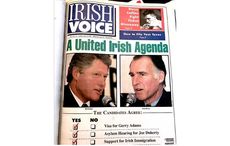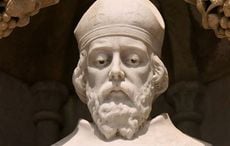The year was 1955. Eisenhower was in the White House. "I Love Lucy" was on the big box television.
And “Duke” Connelly and “Trigger” Burke were hiding out in South Carolina after Connelly took part in a robbery in Queens. The Irish American gunmen had taken the Chase Manhattan bank branch in Woodside for over $300,000.
Connelly was no stranger to crime and neither was Trigger Burke – born Elmer, innocently enough.
Burke’s list of crimes was long and not confined to New York. Perhaps most notoriously, Burke was hired to kill one Joseph “Specs” O’Keefe just a year before Connelly hit the Chase branch in Woodside.
You see, O’Keefe was one of the masterminds behind the notorious Brinks robbery in Boston’s North End in 1950, the largest theft at the time, with nearly $3 million taken by a team of Irish- and Italian-American ne’er do wells. (Numerous films were made about this infamous crime, including a 1978 one starring Peter Boyle and Malachy McCourt, among others.)
In the manhunt afterwards, some feared that O’Keefe was going to rat to the police. Burke was called in to make sure Specs couldn’t rat on anyone.
According to reports, Burke located O’Keefe in a housing project in the Dorchester section of Boston. A chase ensued, with Burke earning his nickname, firing dozens of shots as he pursued O’Keefe through the streets of Dorchester.
After all that Burke blundered, believing one of the shots that hit O’Keefe was fatal. It wasn’t. O’Keefe, if you can believe, contacted the police and demanded that Trigger Burke be arrested.
If you can also believe, Burke eventually escaped from prison. Not surprising, then, that when he was charged a few years later with the killing of a bartender named “Poochy” Walsh, prosecutors sought the death penalty. Trigger Burke was executed in January 1958.
Fast forward a few years to 1964. The setting, again, is Queens, only this time the event is not a bank robbery but the World’s Fair.
As part of the pomp, numerous artists were commissioned to create works as part of the World’s Fair, among them the famous pop artist Andy Warhol. Warhol would eventually produce a series of portraits entitled “13 Most Wanted Men,” which can actually be seen right now at the Queens Museum (until September 7) as part of a larger exhibit entitled “13 Most Wanted Men: Andy Warhol and the 1964 World’s Fair.”
One of Warhol’s “most wanted men” is Trigger Burke’s partner Thomas Francis (Duke) Connelly.
In fact, as The New York Times recently reported, Connelly’s estranged son only discovered that his father had been made into a work of art by Warhol during a recent visit to the Queens Museum.
Raised by his aunt after his father took off, Connelly’s son was told that his father was “a thief who had run with a much tougher group of Irish gangsters and hit men on the Lower East Side of Manhattan,” as the Times put it.
As you can imagine, back in 1964, when World’s Fair organizers learned that Warhol had decided to use their commission money to create artwork that involved criminals, all the right people were offended.
Some believed this was somehow a celebration of killers and burglars. There were other reports that New York Governor Nelson Rockefeller objected, not because the men were criminals but because a number of them were Italian American and Rockefeller did not want to offend this important voting bloc.
Either way, after much back and forth, it was decided that the large portraits would be painted over. (World’s Fair organizers did not take to Warhol’s suggestion that he would replace the criminals with 25 portraits of New York’s infamous “power broker” and much-criticized urban planner Robert Moses.)
Of course, the painted-over portraits themselves became a work of art, a “comment” on crime and punishment and government censorship.
As for Duke Connelly, he did what Whitey Bulger could not do – he vanished and could never be found. Andy Warhol, however, has made him immortal.
Contact “Sidewalks” at tdeignan.blogspot.com.




Comments